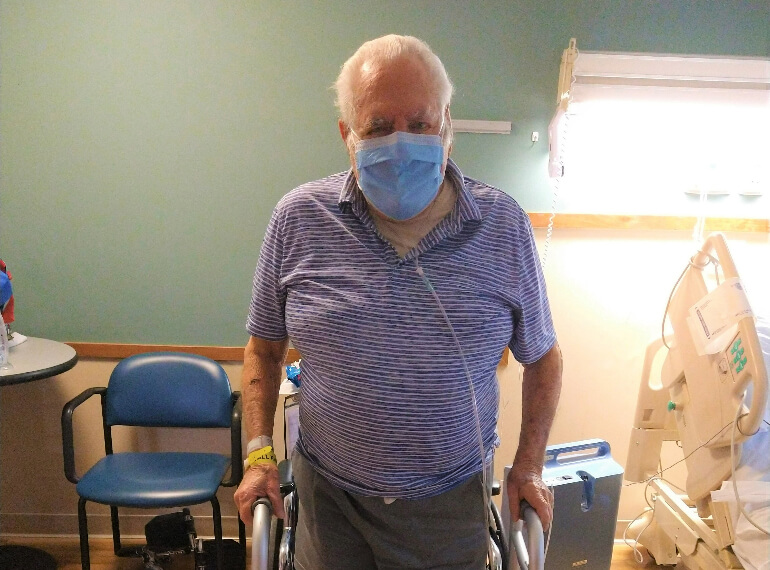Gabriel's story

Gabriel Frigerio was looking forward to visiting his daughter in Florida. However, his plans changed dramatically after a traumatic fall.
After he slipped and fell hard on a tile floor, Gabriel was taken to Hackensack University Medical Center. A CT scan and x-ray revealed abdominal trauma. Gabriel was diagnosed with rectus abdominis hematoma, a pooling of blood in the abdominal muscles, which was causing bruising and pain. He also experienced weakness in his legs and impaired endurance and balance, rendering him unable to stand, walk or perform daily activities such as dressing, bathing and getting in and out of bed on his own.
Once medically stable, Gabriel was transferred to Kessler Institute for Rehabilitation – Saddle Brook (KIR – Saddle Brook) to further his recovery. Gabriel’s physician-led team of rehabilitation nurses, physical and occupational therapists and other specialists developed a treatment plan to help him regain his independence.
During the 15-day stay at Kessler, his team of therapists tirelessly worked to improve Gabriel's mobility. At the outset, he required physical assistance to stand and maintain balance. Walking even short distances was a strenuous task, limited to just 75 feet before a rest break was needed. Climbing stairs was an even greater challenge, with only four consecutive stairs manageable before a pause. However, the focused efforts of the physical therapy sessions brought about significant improvements.
Therapists concentrated on leg strengthening, balance enhancement, coordination, and endurance. Gabriel's determination was evident as he pushed himself to walk longer distances and climb more stairs. The sessions also included specialized techniques, like “sidestepping” to simulate the confined space of an airplane—a necessity for his upcoming trip to visit his daughter in Florida.
Occupational therapy became a crucial component of his rehabilitation, focusing on functional balance, activity tolerance, energy conservation and home safety. Simulating his home environment, he practiced retrieving and transporting small items around the home and using adaptive equipment to get dressed. His hard work paid off when he was able to get in and out of bed and get dressed with minimal supervision.
Through intensive therapy and expert guidance, Gabriel made excellent progress toward mobility. By discharge, he did not need any physical assistance for standing, walking or stair climbing. He achieved dressing with supervision only, no longer requiring physical assistance.
He could now move about with greater independence—walking to and from the toilet, bed and chair under supervision. Overall, his ability to engage in activities had vastly improved, necessitating fewer rest breaks compared to his admission.
Gabriel’s resolve led to a remarkable transformation. He could not wait to start seeing his family again.